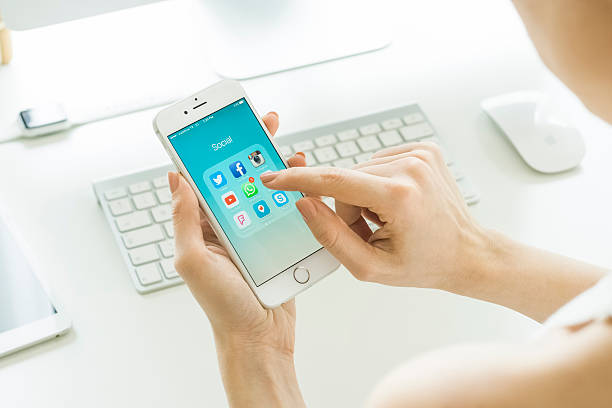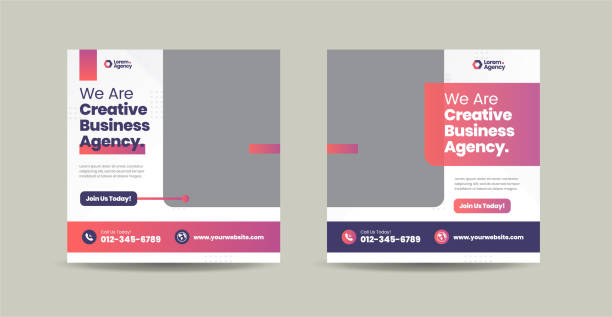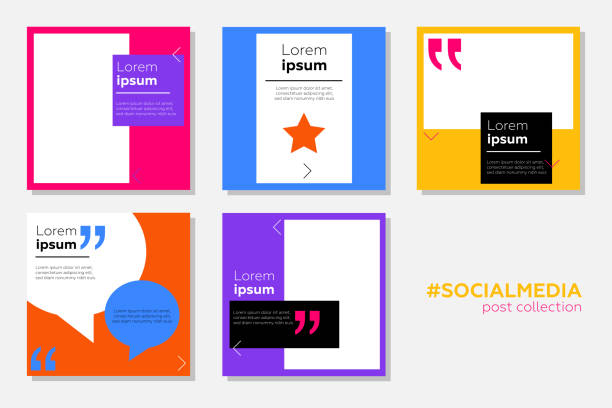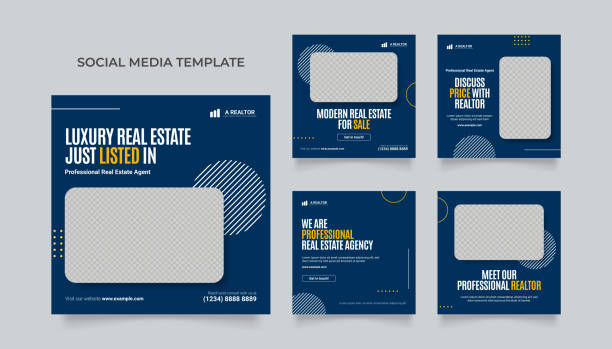
Twitter Featured Image Size for Businesses: How to Make a Lasting Impression
A well-designed Twitter banner is crucial for businesses aiming to create a strong online presence. The right Twitter banner size not only enhances visual appeal but also conveys brand identity effectively. For 2024, the recommended dimensions are 1500 x 500 pixels, ensuring optimal display across various devices. Businesses must consider how elements like logos, taglines, and images are positioned within these dimensions to avoid cropping and maintain clarity.
This blog provides insights into the importance of proper sizing, design techniques, and best practices to ensure that a Twitter banner leaves a lasting impression on potential followers and customers alike.
Key Takeaways
- Adhering to the Twitter banner size of 1500 x 500 pixels is essential for optimal display across devices.
- Incorporating a prominent logo and clear tagline enhances brand recognition and messaging.
- Utilizing high-quality images can lead to significantly higher user engagement rates.
- Consistent branding across platforms contributes to improved customer trust and recognition.
Understanding Twitter Banner Size

To achieve the best visual results on Twitter, businesses should adhere to the recommended banner size of 1500 x 500 pixels. This specific dimension ensures that images display correctly across various devices, including desktops, tablets, and smartphones.
According to Twitter’s guidelines, using the correct size can significantly enhance the profile’s overall aesthetic, leading to better user engagement. In fact, profiles that utilize optimal image sizes can see up to a 30% increase in follower engagement compared to those with improperly sized banners .
Explanation of File Format and Size Limitations
When creating a Twitter banner size, choosing the right file format is crucial. Twitter supports both JPEG and PNG formats. JPEG files are ideal for photographs, as they offer high-quality images with smaller file sizes, while PNG files are suitable for images with transparency or graphics with text.
Additionally, Twitter imposes a maximum file size limit of 2 MB. If the banner exceeds this limit, it will not upload correctly, which can hinder a business’s ability to present a polished and professional appearance. Ensuring that the image adheres to both the dimensions and size limitations helps businesses avoid frustrating errors during the upload process.
Importance of High-Quality Images
High-quality images play a vital role in making a lasting impression on potential followers and customers. A blurred or pixelated banner can reflect poorly on a brand’s credibility and professionalism. To create an impactful Twitter banner, businesses should aim for images with a resolution of at least 72 DPI (dots per inch). This resolution provides a clear and crisp appearance on digital screens.
Investing in professional photography or utilizing high-resolution stock images can significantly enhance the visual appeal of the banner. According to research, images that are well-optimized and visually engaging can lead to a 67% higher likelihood of engagement from users .
Here is a table summarizing the key aspects of Twitter banner size:
| Aspect | Recommendation |
| Dimensions | 1500 x 500 pixels |
| File Formats | JPEG, PNG |
| Maximum File Size | 2 MB |
| Image Resolution | Minimum 72 DPI |
By understanding the critical elements of Twitter banner size, businesses can ensure that their banners are visually appealing, technically sound, and optimized for user engagement. This attention to detail not only reflects professionalism but also contributes to building a strong brand identity on social media.
Why Banner Size Matters for Businesses

The banner at the top of a Twitter profile is often the first visual element potential followers see. It serves as a powerful tool for engaging users and setting the tone for the brand’s identity. Research indicates that visual content is processed 60,000 times faster than text by the human brain. A well-sized banner can significantly enhance user experience, leading to increased engagement.
Brands that utilize high-quality visuals can see up to a 94% increase in user engagement, highlighting the importance of getting the banner size and design right. This engagement is crucial for businesses looking to attract and retain customers in a competitive marketplace.
Avoiding Image Distortion and Cropping Issues
Using the correct banner size is essential to avoid distortion and cropping issues that can detract from the intended message. A Twitter banner that does not meet the recommended dimensions of 1500 x 500 pixels may appear blurry, pixelated, or cropped incorrectly, potentially leading to the loss of important branding elements such as logos or slogans.
When banners are resized incorrectly, critical information can be cut off, leading to confusion or misrepresentation of the brand. Maintaining the integrity of the design ensures that all elements are displayed clearly and attractively, which is vital for maintaining a professional image.
Consistency in Branding Across Platforms
Consistency in branding is key to building brand recognition and trust. Businesses often utilize multiple social media platforms to reach their target audience, making it crucial to maintain uniformity in visual elements across all channels. A properly sized Twitter banner not only aligns with Twitter’s specifications but also complements the design of banners used on other platforms like Facebook and LinkedIn.
Consistent branding can lead to a 23% increase in revenue, as it fosters familiarity and trust among consumers. By using the correct banner size, businesses can ensure that their branding remains cohesive, reinforcing their identity in the minds of customers.
Designing an Effective Twitter Banner

Creating an effective Twitter banner is essential for businesses aiming to capture attention and convey their brand identity. A well-designed banner not only attracts followers but also reinforces brand messaging.
Here are key design elements and tips to consider for crafting a standout Twitter banner.
Key Design Elements to Include
- Logo: A prominent logo is crucial for brand recognition. It should be placed strategically, ideally in a corner where it remains visible without being overwhelming. Research indicates that 70% of consumers feel more connected to brands that use consistent branding across platforms .
- Tagline: Including a succinct tagline can effectively communicate a brand’s mission or unique selling proposition. This text should be clear and readable, ideally positioned in the center or just below the logo. Keeping it short ensures that it remains impactful while not cluttering the design.
- Images: Images used in the banner should be relevant to the brand and resonate with the target audience. High-quality visuals create a positive impression and enhance engagement. Consider using professional photographs or graphics that reflect the brand’s personality.
Tips for Creating a Visually Appealing Layout
To achieve an effective layout, it’s essential to balance the various elements within the banner. Here are some tips:
- Use White Space: Effective use of white space helps prevent a cluttered look. It allows key elements, like the logo and tagline, to stand out and makes the banner more readable.
- Alignment: Aligning elements properly contributes to a harmonious design. Keep the logo and tagline aligned to avoid visual chaos, guiding the viewer’s eyes naturally across the banner.
- Focal Point: Establish a focal point in the banner that draws attention. This could be a central image or the logo. The design should encourage the viewer to focus on this element first.
Importance of Color Scheme and Typography
The choice of color scheme and typography plays a significant role in brand identity. Consistent colors can improve brand recognition by up to 80% . Here’s what to consider:
- Color Scheme: Choose colors that align with the brand’s identity. For example, blue can convey trust, while orange can evoke enthusiasm. The colors should also contrast well with each other to enhance readability.
- Typography: Select fonts that reflect the brand’s personality. A professional brand may opt for serif fonts, while a creative brand might choose playful, sans-serif fonts. Consistency in font choices across platforms also strengthens brand identity.
An effective Twitter banner design incorporates a thoughtful arrangement of key elements such as the logo, tagline, and images, supported by a cohesive color scheme and typography. By following these guidelines, businesses can create a visually appealing banner that leaves a lasting impression on their audience.
How Does Twitter Banner Size Differ from Instagram Banner Size?

When it comes to social media marketing, businesses must tailor their visual content to each platform’s specifications. One of the most crucial aspects is understanding the differences in banner sizes between Twitter and Instagram. Each platform has unique dimensions that cater to its layout and user engagement strategies.
Twitter Banner Size Specifications
Twitter banners, also known as header images, are displayed at the top of a user’s profile. The recommended size for Twitter banners is 1500 x 500 pixels. This format is horizontal, allowing brands to showcase their logos, taglines, and other significant visuals prominently. The banner file should be a JPG, PNG, or GIF, with a maximum file size of 2 MB. A high-resolution image ensures that the banner appears sharp and clear across various devices, providing an appealing first impression for potential followers.
Instagram Banner Size Specifications
In contrast, Instagram utilizes a different approach with its profile aesthetics. While Instagram does not have a specific “banner” like Twitter, it prominently features the profile picture and grid layout. The profile picture, which can serve a similar purpose to a banner, is displayed in a circular format, recommended at 320 x 320 pixels. Furthermore, Instagram posts, which act as the visual representation of a brand, should ideally be 1080 x 1080 pixels for square posts, with a maximum file size of 30 MB. Instagram’s layout emphasizes visual storytelling, making it essential for brands to use high-quality images that attract and engage users.
Importance of Understanding Size Differences
Understanding the differences between Twitter and Instagram banner sizes is essential for businesses aiming for cohesive branding across platforms. While Twitter emphasizes horizontal visuals that can contain more information, Instagram focuses on circular profile images and square posts, encouraging brands to tell their story visually.
Additionally, research indicates that 75% of consumers base their judgment of a brand’s credibility on visual design . Hence, ensuring that images are appropriately sized and formatted for each platform can significantly impact user engagement and brand perception.
Final Thoughts
A well-crafted Twitter banner is vital for businesses looking to establish a strong online presence and foster engagement with their audience. By adhering to the recommended size of 1500 x 500 pixels and focusing on key design elements like logos, taglines, and high-quality images, brands can create an impactful visual identity.
Coupled with a cohesive color scheme and typography, a properly designed banner not only enhances brand recognition but also significantly improves user engagement. Investing time and effort into designing an effective Twitter banner will ultimately leave a lasting impression, helping businesses stand out in a competitive marketplace.
FAQs
What are the requirements for an Instagram usernames?
An Instagram username must be unique and can include letters, numbers, periods, and underscores. Usernames can be between 1 to 30 characters long and should not include special characters or spaces.
What are the recommended instagram story dimensions?
The optimal dimensions for Instagram Stories are 1080 x 1920 pixels. This size ensures that your images and videos display correctly across various devices and maintains the quality of your content.
What elements should I include in my Instagram bio?
An effective Instagram bio should include key elements such as your brand’s name, a clear description of what you offer, relevant keywords, and a call to action. Additionally, consider including emojis for visual appeal and links to your website or specific promotions.
What is the recommended size for Instagram Reels?
The recommended size for Instagram Reel size is 1080 x 1920 pixels. This vertical format ensures that videos display optimally on mobile devices, providing an engaging viewing experience.
Why should I use funny captions on Instagram?
Using funny instagram captions can enhance the overall appeal of your posts, making them more relatable and shareable. Humor can increase user engagement, leading to more likes, comments, and shares. It helps establish a friendly and approachable brand personality, similar to how a well-designed Twitter banner captures attention and reinforces identity.
How can I ensure my Instagram profile picture stands out?
To create a standout profile picture, use high-quality images that are well-lit and visually engaging. Incorporate your brand’s logo or a recognizable personal image, ensuring it aligns with your overall brand identity.
What are the main ways to monetize an Instagram account?
Businesses can monetize their Instagram accounts through various strategies, including sponsored posts, affiliate marketing, selling products directly through Instagram Shopping, offering services, and utilizing IGTV ads. Each method requires building a strong follower base and engaging content to attract potential sponsors and customers.
What is cache, and why should I clear it on Instagram?
Cache refers to temporary files stored on your device to speed up app performance. Over time, these files can accumulate and may lead to issues like slow loading times or app glitches. Clearing the cache can help improve the app’s performance and resolve minor issues.
